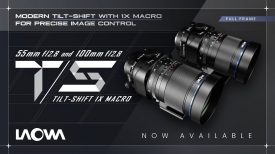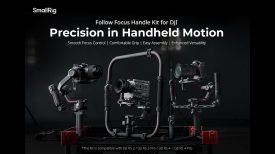
On paper the Light Storm LS1S from Aputure has impressive stats. It’s about the size of a 15” MacBook Pro, has 1536 LEDS, with a colour temperature of 5500K (there’s also a dual colour 3200-5500K version), and a beam angle of 25 degrees. The LEDs are rated with a lifespan of over 100,000 hours and have a CRI 95+. This isn’t a scientific review of the LS1 though – I haven’t been shooting charts or using spectral analysis, but rather a hands-on approach, using the lamp in my everyday work.
My initial thoughts when taking the Light Storm out of the box is that it’s quite heavy, weighing around 2kg, but it feels reassuringly robust and well built – able to withstand the rigours of filming. The design seems well thought out and the frame is made from ‘aero’ grade aluminium.
Opening the barn doors reveals the LEDs, which are packed together much closer than other LED lights I’ve seen. They’re arranged in a honeycomb pattern and Aputure say that this is what allows them to achieve the same output as a 1K lamp in a much smaller unit that only draws 120W of power.
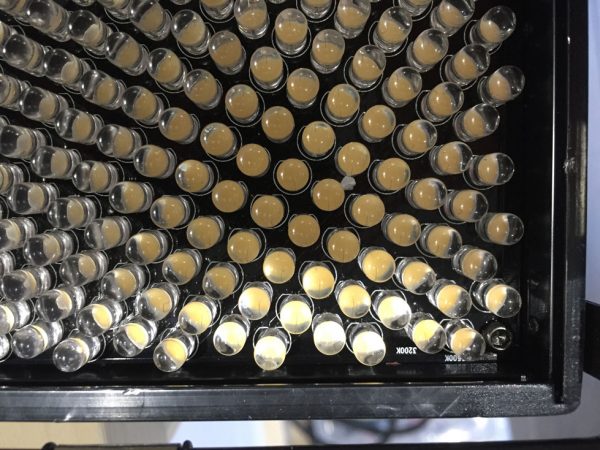
The key to this density of LEDs can be found on the back of the unit: the rear of the lamp acts as a heatsink, consisting of one huge grill. This allows natural convection heat transfer and is designed to stop the LEDs overheating.
Although one of the benefits of LED tech is the fact that fixtures run much cooler than tungsten equivalents, densely packed LEDs can still get quite hot. If not controlled, this can lead to a number of problems: notably colour shift over time and a reduction in the service life of the LEDs. The rear grill heatsink aims to eliminate these issues, although of course I’ve not been able to determine any effect on the longevity of the diodes so far. This type of passive cooling also makes this lamp sound friendly as there are no fans whirring away in the background. However, it does mean the grill on the rear of the LS1 can get hot due to the heat transfer – the edges of the fins are also quite sharp so be careful when handling the lamp.
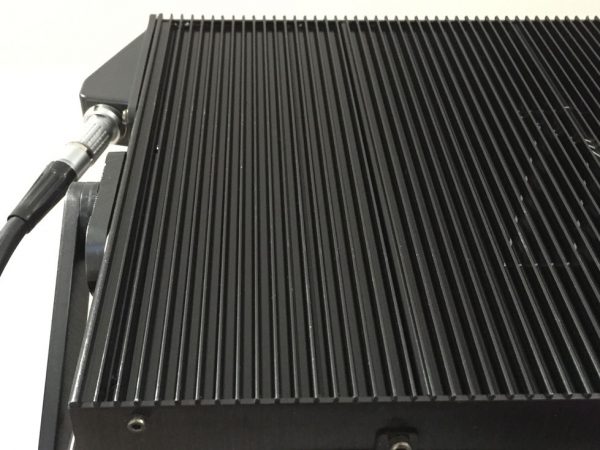
The Light Storm LS1 comes with barn doors, which can only be removed using an allen key. The inside of the barn doors are silver with a mottled pattern, which helps to maximize the output of the light produced by the LEDs and makes the lamp quite punchy. I found that without the barn doors attached, the output of the light reduced by around a stop and the beam seemed a little narrower. I found the barn doors didn’t really help to control shape of the light though and there was a lot of light leakage where the barn doors meet the body of the lamp – I had to black wrap this. Not ideal if you’re trying to create an intimate lighting set up. Also beware the barn doors do have sharp edges and I nearly cut my hand on a number of occasions (I was testing a prototype unit so this might not be the case on the production model).
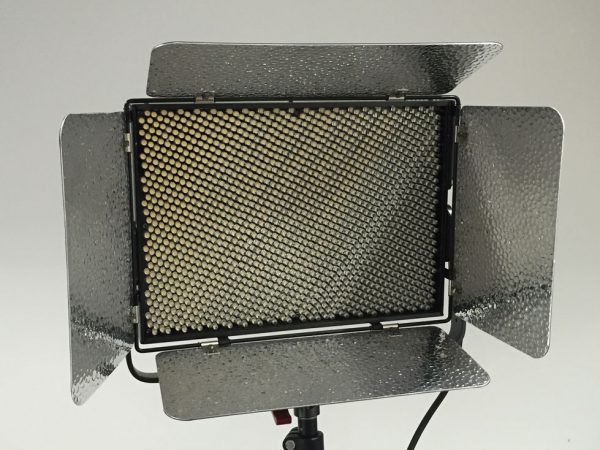
Most LED lamps on the market have the controls mounted on the back but due to the design of the LS1’s heatsink there’s no room to mount them. Therefore, the controller is connected to the lamp via an eight-pin heavy-duty Lemo cable. The connector is angled away from the side of the lamp but I did still find it difficult to connect sometimes due to its proximity to the mounting bracket.
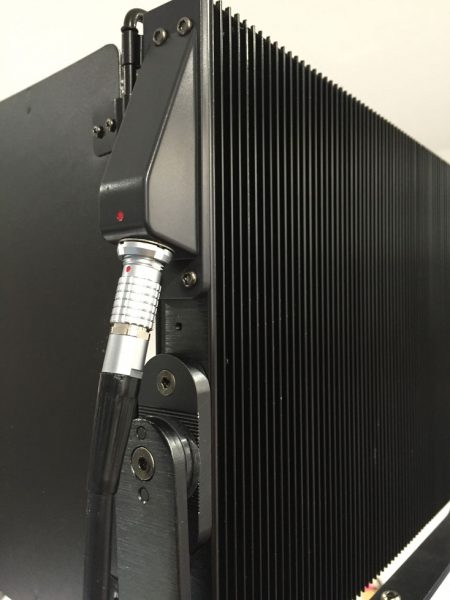
The control unit is made of plastic and is 18cm x 11cm x 5cm in size. At first I was a bit dubious about having a separate controller as you end up having more cables trailing over the location – in this case a controller unit as well as a mains transformer. However, one good thing with having a separate controller is that when the lamp is up high you don’t have to bring it down to adjust settings, and you can put the control unit wherever you want. The controller does have a strap on it, so it can be attached to a lighting stand, but I’d like an option to attach the controller and mains supply to the lamp in a more permanent manner.
The lamp can be powered either from the mains or by using a battery. You can choose whether you want either a V-lock plate or Anton Bauer plate attached to the rear of the controller. This means the lamp is very portable and can be used for both interiors and exteriors (I’m not sure it’s very water resistant though so I wouldn’t use it in wet weather). I used a PAGlink PL96e – a 96 Wh battery – for the test. With the lamp at 100% I managed to run it for an hour.
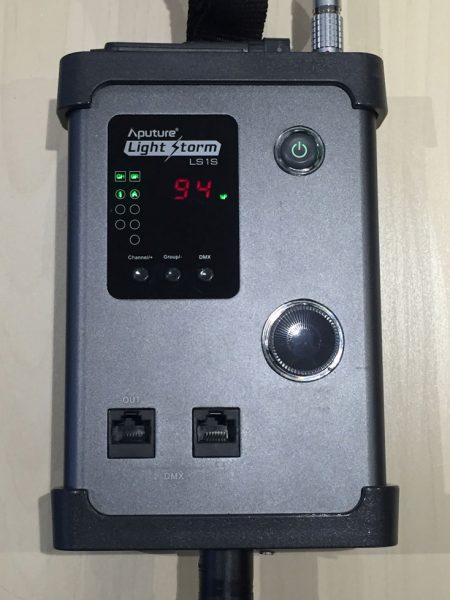
On the controller there’s an on/off button, a dimmer toggle to control the brightness and digital read out showing the output as a percentage. You can change the output of the lamp between 10-100%. When using the dimmer there doesn’t seem to be any colour shift but the light output does flicker as you decrease or increase the intensity of the light. This is no good if you are trying to discreetly adjust the brightness whilst recording. The DMX option on the control unit might be better for this if you’re using a lighting control desk.
The control unit also comes with a secondary wireless remote control. Two antennae are mounted on top of the main controller and the remote communicates with it on the 2.4Ghz frequency. This allows you to switch the lamp on and off and dim up and down up to 100m away. If using a bi-colour version of the LS1 you can remotely change the colour temperature. You also have the option to link lamps together in different channels so up to four lamps can be controlled together from the same remote. I didn’t find any issues with the remote but wonder if using the 2.4Ghz frequency may give problems in areas with heavy WiFi use.
The LS1 fastens to a standard lighting stand using a regular 16mm socket attached to the yoke. Loosening a handle on the side allows the lamp to be tilted up and down. The mobility is a bit limited in the standard vertical mounting position but mounting the lamp horizontally gives a greater range of adjustment. The plastic handles don’t feel very robust though and I wouldn’t expect them to last long in the real world.
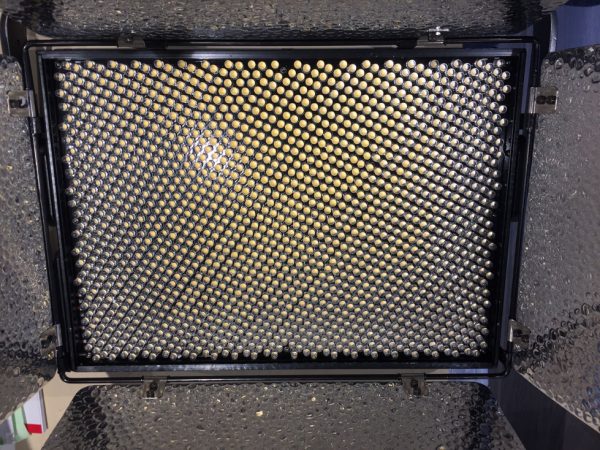
The lamp is quite punchy at 100% and can cast quite hard shadows. The LS1 comes with a pack of diffusing paper – Aputure say their engineers ‘tested 53 models of diffusing papers, [over] more than 2000 hours’ to select the most suitable ones for this product. I found I needed five sheets of of it in order to soften the light and get a reasonable result when lighting a subject for a Medium Close Up interview shot. Because of the high output of the lamp I still achieved a decent f-stop even whilst using so much diffusion. My best results came from bouncing the LS1 off a white Lastolite reflector, which produced a lovely soft light with excellent colour rendition and was very flattering for my subject.
I compared the LS1 against a Felloni bi-colour high output led panel light set to 5500k which uses a more traditional arrangement of LEDs in rows. I found the LS1 had more output making it much brighter with a narrower focused beam compared to the Felloni which had a wider spread.
With both lamps’ LEDs set to an indicated 5500K I did a white balance and found there was around a 200K difference between the 2 lamps with the LS1 producing a warmer light. I did feel with care you could probably use both lamps at the same time on the same shoot but as a rule of thumb I do try not to mix manufacturers when using LEDs to keep colourimetry consistent – differences in output spectrum lights can become especially obvious on skin tones.
That said, I have to say I am very impressed with the LS1. The main body feels very robust and well constructed although the handles and controller feel like they might get damaged easily in the field.
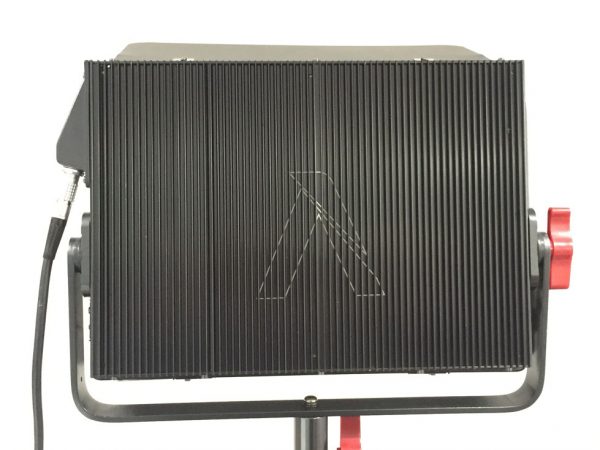
The light itself is versatile and can be used indoors and out. I’ve used the lamp in many different scenarios from lighting external PTC’s with presenters, to key lights for interviews and bounced into the ceiling for general illumination. It’s worked well I all these scenarios.
So it’s decently built, the output is flexible and it looks good on camera. Aputure haven’t developed a large dealer network in the UK or the US so getting the light serviced might pose some issues for some. But in terms of quality it’s certainly up there with many other popular brands on the market and with a price tag of around £550.00 it may be the choice of many professionals on a more modest budget.



